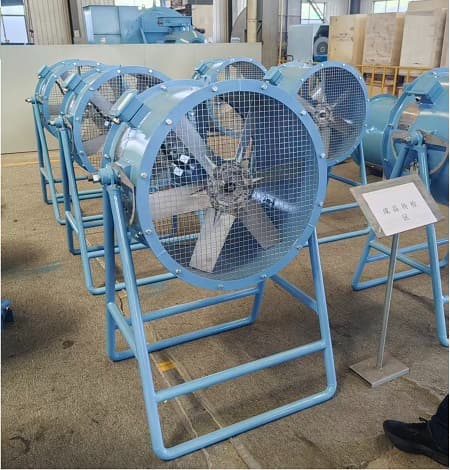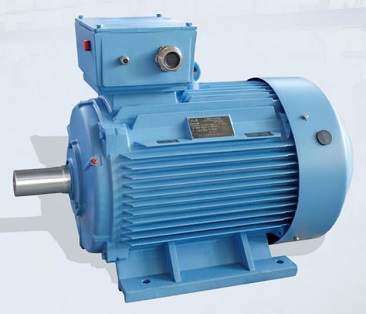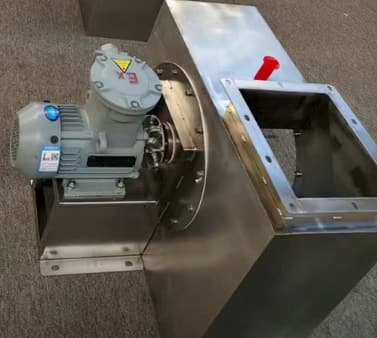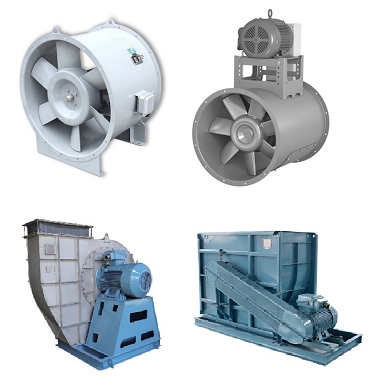Mancooler (Workstation) Fans — Why Your Factory Needs the Right One
A mancooler (often written “man cooler” or called a workstation fan / spot cooling fan) is a rugged, high-velocity axial fan designed to deliver targeted airflow to individual workers or localized work zones in industrial environments — think foundries, welding booths, assembly lines and warehouse picking stations. Mancoolers are built for portability, directional control (swivel bases or mounting options) and OSHA-style guarding so they can be positioned close to people or equipment for immediate cooling and air circulation.
Why targeted (spot) cooling matters for productivity and safety
Large HVAC systems and HVLS fans move a lot of air, but they can be slow to affect micro-climates at an operator’s station. Targeted airflow from a manc ooler reduces perceived temperature, speeds sweat evaporation, and can cut heat-stress risk during the hottest parts of a shift — an important engineering control often recommended alongside general ventilation and administrative measures. For many facilities, a mix of building-scale ventilation and local mancoolers is the most cost-effective strategy.Typical design features and mounting options
Mancoolers are normally axial (tube-axial or propeller) fans with robust motors, shrouds and front/rear guards; common options include pedestal (floor) mounts, wall/column mounting plates, casters for portability, and swivel bases for 360° aiming. Materials range from painted steel to stainless steel or special coatings for corrosive environments. Manufacturers commonly specify adjustable pitch impellers and OSHA-compliant screens as standard items. These choices affect durability, noise, and airflow pattern — all important when selecting units for continuous industrial use.How to choose the right manc ooler for your application
Selection should be guided by three practical parameters: (1) airflow and throw — how far/strongly the air needs to reach the worker or equipment (CFM and throw distance), (2) mounting/flexibility — floor, wall, ceiling or mobile, and (3) duty and environment — continuous duty motors, IP/ingress protection, corrosive atmospheres or wash-down requirements. For example, welding cells often need stainless or coated housings and spark-resistant guards; foundries need high-temperature rated components. Manufacturer catalogs provide model families and datasheets to map these needs to specific part numbers.Safety, ventilation interaction and potential pitfalls
A key caution: spot fans should complement — not undermine — local exhaust or general ventilation. If a manc ooler blows contaminants toward a worker or across an exhaust capture hood, it can worsen exposure. Ensure placement does not disrupt capture efficiencies, and prefer designs that allow controlled aiming and speed control. Also verify guarding and electrical protection meet local standards and that fans positioned near flammable dusts or hot surfaces are suitable for the hazard class.Energy and total cost perspective
Compared with refrigerative spot coolers or expanding building AC, manc oolers are low-capital and energy-efficient when the goal is personal cooling rather than lowering whole-space dry-bulb temperature. For many plants this means better cost-benefit: lower installation cost, flexible redeployment and reduced electrical load. That said, when ambient air temperatures exceed certain thresholds (very high wet-bulb or >95°F / 35°C dry-bulb), fans alone may not prevent heat illness and more robust cooling strategies are required.If your company manufactures manc oolers, emphasize rugged construction (heavy-gauge housings, durable bearings), multi-mount options (pedestal, wall, caster), adjustable airflow (tilt/swivel, multi-speed or VFD-ready motors), and accessory options (filters, stainless versions, spark-resistant guards). Publish clear datasheets: CFM, static pressure, power draw, sound level (dB), enclosure rating and mounting instructions — these are the buyer’s decision drivers in industrial procurement.
Conclusion
For plant managers: audit heat hotspots, compare throw/CFM needs, and pilot a small fleet of manc oolers before large roll-outs. For spec writers and procurement: require datasheets, safety guards and a brief ventilation-interaction assessment from vendors. For manufacturers: lead with durability, mounting flexibility, clear performance curves and compliance info in product pages. Mancooler (Workstation) Fans — Why Your Factory Needs the Right One
Mancooler (Workstation) Fans — Why Your Factory Needs the Right One
 Motor Classifications in Industrial Fans
Motor Classifications in Industrial Fans
 Materials for Explosion-Proof Fan
Materials for Explosion-Proof Fan
 Direct Drive vs. Belt Drive in Axial Fan and Centrifugal Fan
Direct Drive vs. Belt Drive in Axial Fan and Centrifugal Fan

